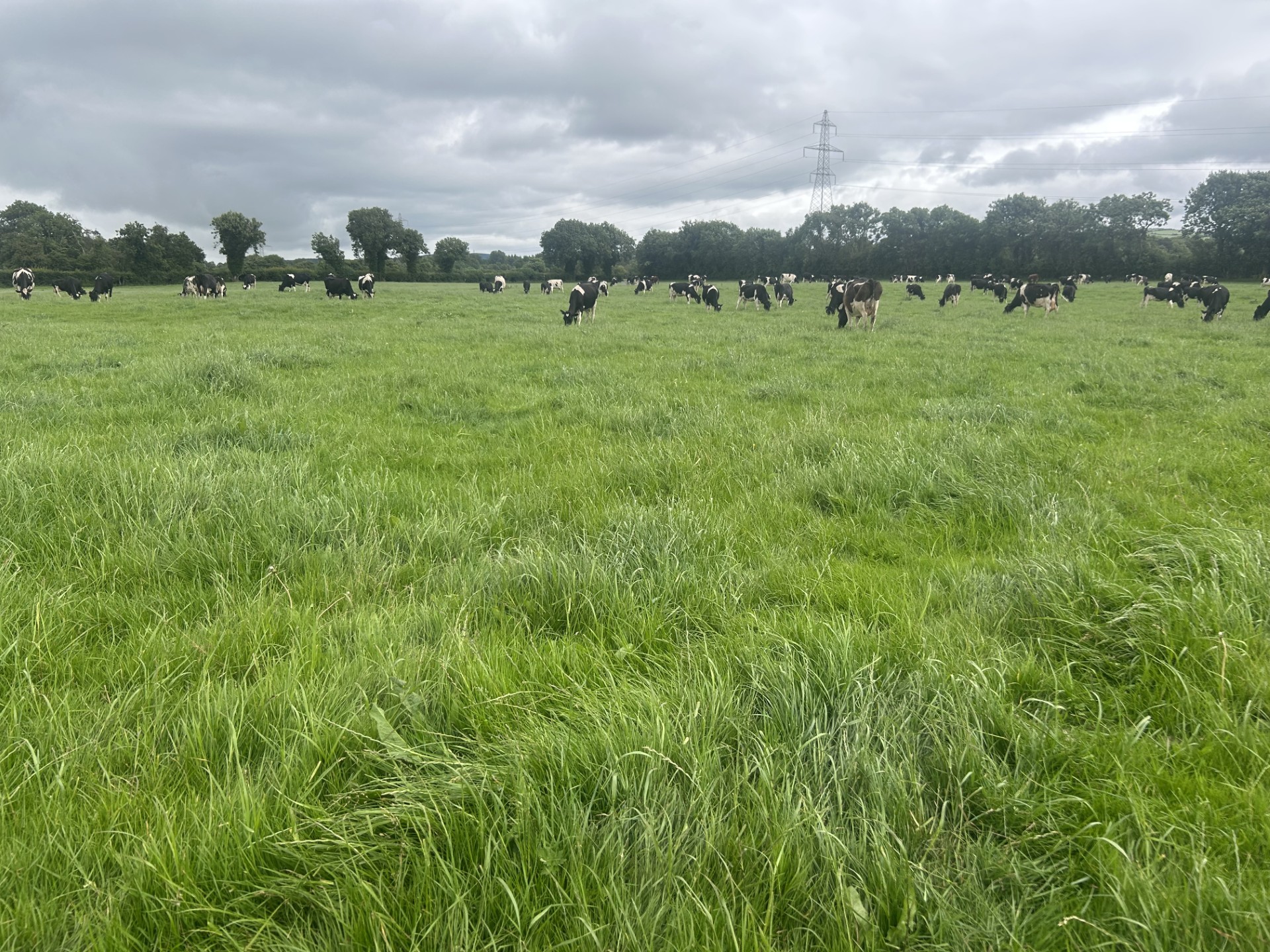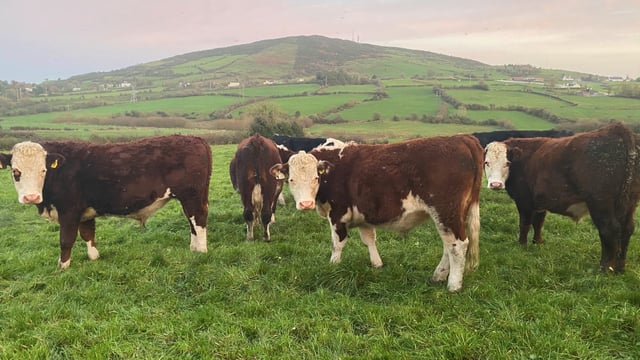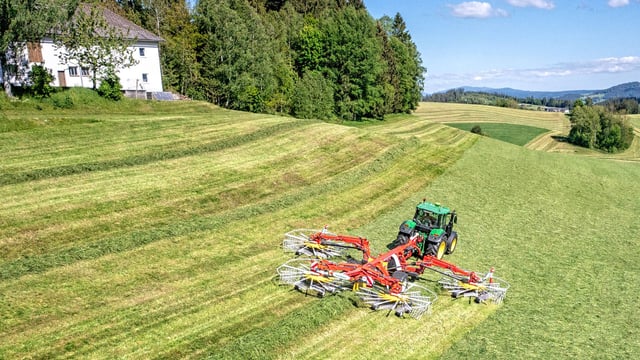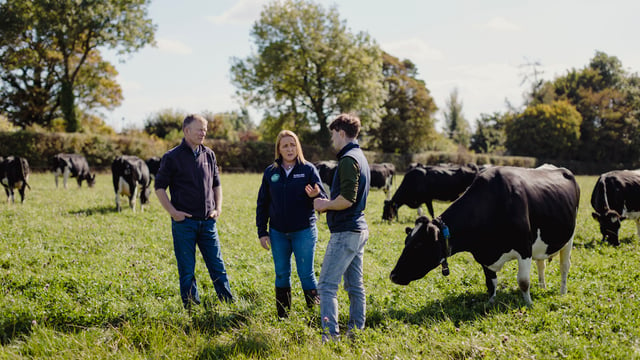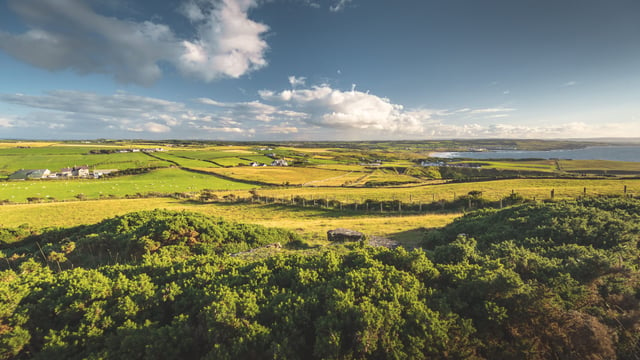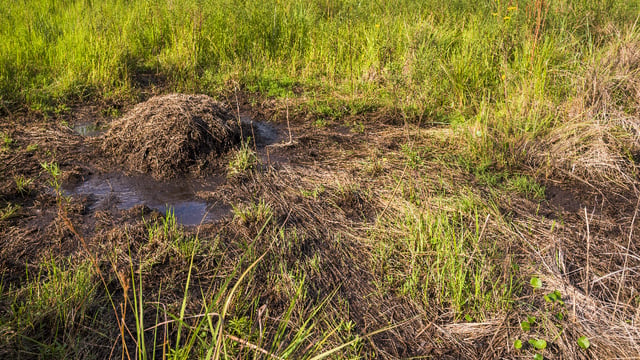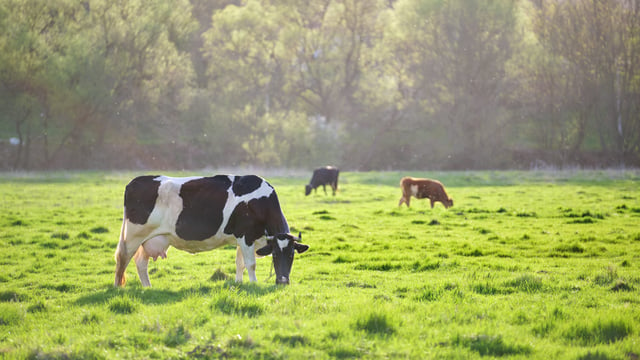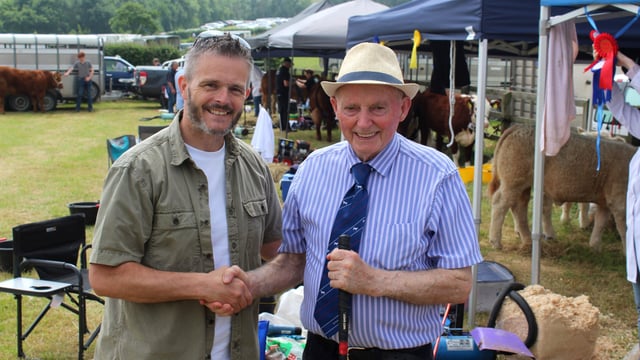How can farmers increase annual grass growth to 15t DM/ha?
It was highlighted at one of the main boards at Moorepark '25 that farmers need to refocus on growing more grass on farms to reduce costs and increase performance.
Teagasc research officer, Professor Michael O'Donovan said that grass dry matter (DM) production from all farms, as recorded on the National Farm Survey, averaged 9.2t DM/ha, whereas Paturebase Ireland recorded farms averaging 13.2t DM/ha/year from 2014-2024.
The top 100 farms on Pasturbase Ireland recorded an average growth of 15.2t DM/ha, which is the target.
Prof. O'Donovan added: "It has been a good growing year so far and we are on track to grow 14t DM/ha this year."
He said there needs to be a step away from too much concentrates being fed, as it is holding back grass growth and utilisation.
The researcher said it was very difficult – especially for different land types – to grow 15t DM/ha/year, and noted that it can only be achieved through optimum soil fertility to retain and utilise the nutrients, effective nutrient application, grassland management, and clover incorporation.
It was highlighted on the day that in order to grow 15t of grass DM/ha, farmers should aim to grow 2.6t DM/ha in spring, 6.7t DM/ha in summer, and 5.7t DM/ha in the autumn.
Grass growth
According to Prof. O'Donovan, reports from 2024 suggest that soils on dairy farms were significantly below the levels required for optimum pasture growth and nutrient use efficiency.
The reports showed that only 24% of soils are at optimum pH, P, and K, and only 60% of the soils have a pH of over 6.3.
More than half (53%) of soils are only at index one or two for P and under half (47%) of soils are at index one or two for K.
The grassland management and performance difference of farms growing different rates of grass is as follows:
| NFS average | PBI average | Top 100 PBI | |
|---|---|---|---|
| Farm productivity (t DM/ha) | 9.7 | 13.2 | 15.2 |
| Soil fertility | Low | Med | High |
| Grazing season length (days) | 235 | 265 | 280 |
| No. of grazings | 6 | 7+ | 8+ |
| Concentrate usage (kg/cow) | 1,350 | 1,100 | 800 |
| Area in clover (%) | <5% | 20% | 35% |
| Area reseeding/over sowing | <5% | 5-10% | 15-30% |
| Fertiliser usage (kg N/ha) | 170 | 190 | 200 |
| Grass utilisation (t DM/ha) | 7.7 | 10 | 12 |
Grass/clover swards were highlighted on the day by Teagasc's Michael Egan to be a proven technology to grow more herbage and improve animal performance by 8-10%, while also boosting intake and sward quality.
Grass/clover swards allow farmers to reduce their N usage in the mid-season as swards with 20% clover may fixate up to 70-100kg N/ha.
Based on April clover content, Teagasc highlighted the ease of aligning N inputs with clover content as nitrogen fixation will work away on its own with the odd top-up of dairy washings.
15t DM/ha
It was highlighted that every farm can increase their grass growth by up to 20% by taking on an array of different actions to improve soil fetility, grazing infrastructure, grassland management, and clover incorporation.
In the short-term, farmers should avail of their soil test results by spreading lime where necessary, and try to rectify low P and K paddocks and match N fertiliser applications.
There are a number of key grazing management targets that must be achieved to maximise herbage production during the grazing season:
- Early February (opening farm cover) >1,000 kg DM/ha;
- Early April (start second rotation) 600 – 650 kg DM/ha;
- April to August 150 – 180 kg DM/LU;
- Mid-September (peak farm cover) 1,100 kg DM/ha;
- December 1st (closing farm cover) >750 kg DM/ha.
In the medium-term, farmers need to match their farm's ability to grow grass with their stocking rate on the farm, so that you are not keeping extra cows to only hamper production and increase input costs.
Farmers need to put their focus on growing and utilising more grass through optimal pre-grazing cover and post-grazing residuals to maintain quality and to reduce meal input.
In the longer term, farmers needs to ensure that their herd is performing off quality grass and their grazing infrastructure allows for this.
Through good grazing infrastructure and management, farmers should be aiming for eight grazings in each paddock every year, which may lead to an extra 1.3t DM/ha.
The correct pH of over 6.5 can lead to an extra 1.5t DM/ha, while using high pasture profit index (PPI)and high clover performing varieties can deliver an extra 1.5-2.5t DM/ha.
Egan added: "Growing 15t DM/ha is difficult, but if we want to achieve it, all of these actions have to line up."


